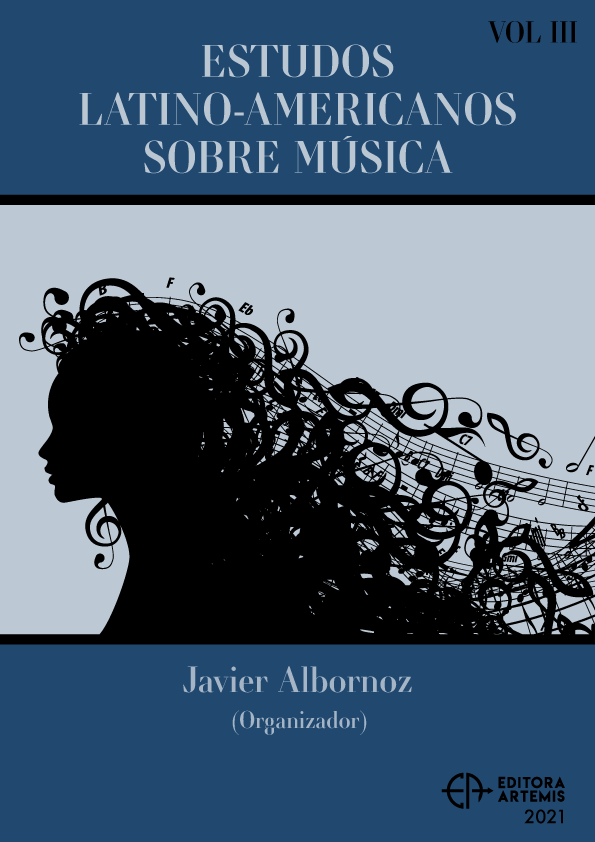
SONS BRILHANTES E SONS AVELUDADOS: UM EXPERIMENTO VOCAL COM O SUPORTE PRAAT
Este trabalho apresenta os resultados obtidos em um experimento, no qual através de análise acústica vocal, investigou-se possíveis diferenças em dados espectrais gerados a partir de uma mesma melodia cantada por voz masculina, com a laringe em duas diferentes posições. O objetivo deste trabalho foi contribuir para uma melhor compreensão sobre a relação entre a posição da laringe no pescoço do cantor e o resultado sonoro obtido. Assim, os resultados foram confrontados com as percepções de (CAMPOS, 2007) e (MILLER, 2008). O primeiro autor liga sons “escuros e aveludados” com uma laringe mais baixa no pescoço, e sons claros e brilhantes com uma laringe mais alta no pescoço. O segundo, coloca que uma laringe mais alta no pescoço favoreceria a produção de harmônicos agudos, enquanto uma laringe mais baixa no pescoço favoreceria harmônicos graves. A metodologia utilizada teve como base a gravação de dois áudios de um mesmo vocalize executado por uma mesma voz masculina. A primeira emissão vocal gravada foi executada com a laringe em uma posição abaixada no pescoço e a segunda com a laringe em uma posição mais alta no pescoço. Para processar os dados obtidos na coleta, foi utilizado o software Praat, software para análise acústica, muito utilizado por profissionais da voz. Extraiu-se dados sobre o pitch, os formantes, a intensidade, onda sonora, Jitter, Shimmer, e o espectrograma vocal de cada um dos áudios gravados. Dos parâmetros acústicos analisados, os que apresentaram diferenças mais significativas entre os dois áudios foram onda sonora, formantes e frequência. Os resultados encontrados reforçam a visão de (MILLER, 2008) e (CAMPOS, 2007) de que a posição da laringe no pescoço tem relação direta com o resultado sonoro emitido.
SONS BRILHANTES E SONS AVELUDADOS: UM EXPERIMENTO VOCAL COM O SUPORTE PRAAT
-
DOI: 10.37572/EdArt_1408214227
-
Palavras-chave: Análise acústica vocal. Posicionamento laríngeo. Voz Cantada
-
Keywords: Voice physiology - Vocal pedagogy - Vocal technique
-
Abstract:
This work presents the results obtained in an experiment, in which, through vocal acoustic analysis, possible differences in spectral data generated from the same melody sung by a male voice were investigated, with the larynx in two different positions. The aim of this study was to contribute to a better understanding of the relationship between the position of the larynx on the singer's neck and the sound result obtained. Thus, the results were compared with the perceptions of (CAMPOS, 2007) and (MILLER, 2008). The first author links “dark and velvety” sounds with a lower larynx on the neck, and clear and bright sounds with a higher larynx on the neck. The second, states that a higher larynx in the neck would favor the production of acute harmonics, while a lower larynx in the neck would favor serious harmonics. The methodology used was based on the recording of two audios of the same vocalize performed by the same male voice. The first recorded vocal emission was performed with the larynx in a lowered position on the neck and the second with the larynx in a higher position on the neck. To process the data obtained in the collection, the Praat software was used, software for acoustic analysis, widely used by voice professionals. Data on the pitch, the formants, the intensity, the sound wave, Jitter, Shimmer, and the vocal spectrogram of each of the recorded audios were extracted. Of the analyzed acoustic parameters, the ones that showed the most significant differences between the two audios were sound wave, formants and frequency. The results found reinforce the view of (MILLER, 2008) and (CAMPOS, 2007) that the position of the larynx in the neck is directly related to the sound result emitted.
-
Número de páginas: 15
- Régis de Carvalho

